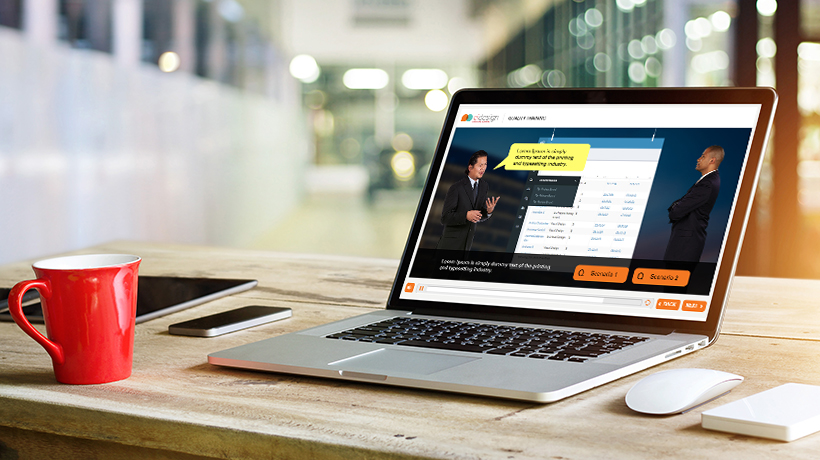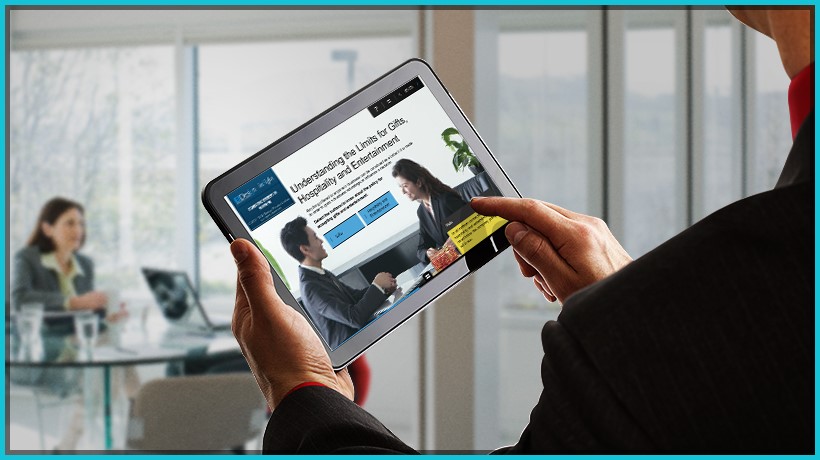
My eBook, Blended Learning 2.0 – Adopting the Next Gen Blended Learning Model for the Digital Workplace, provides insights, tips, and strategies on Blended Learning 2.0 that you can use to maximize the impact of your Virtual Training Transformation.
Background
The COVID-19 pandemic has changed the workplace dynamics, and we are seeing the “new normal” of remote operations. This has led to the need of a rapid Virtual Training Transformation.
As organizations undertake this transformation, a common concern that L&D teams have is whether the Virtual Training can create the same value and impact as their existing ILT sessions. For now, since most of the training will be consumed virtually, they also need cues on how to engage remote learners.
To match today’s workplace dynamics (remote operations), the answer lies in adopting the next gen approach – Blended Learning 2.0 or the Blended 2.0 mode. A median offering of the two modes, VILT sessions with Self-paced Online Learning, Blended Learning 2.0 is emerging as the preferred and optimal mode for Virtual Training.
In this eBook, Blended Learning 2.0 – Adopting the Next Gen Blended Learning Model for the Digital Workplace,
- I provide a background of the changed workplace dynamics (employees working from home) and the implicit need for Virtual Trainings to replace the ILT/classroom training.
- I introduce the Blended 2.0 mode that is emerging as the optimal solution to move the ILT sessions to the virtual mode.
- I outline the key challenges associated with the transition to the Blended 2.0 mode and how these can be addressed through a wide set of options.
- To help organizations make a smooth and effective transition to the Blended 2.0 mode, I share a workflow, technology pieces to factor, and toolkits. These are designed to help you create a high-impact transformation. I also share several tips and best practices that can be used.
- I wrap up with illustrating how the Blended 2.0 mode can be used for key corporate trainings. Specifically, I look at trainings that have been traditionally offered in the ILT mode.
More About the eBook: Blended Learning 2.0 – Adopting the Next Gen Blended Learning Model for the Digital Workplace
I have designed the eBook, Blended Learning 2.0 – Adopting the Next Gen Blended Learning Model for the Digital Workplace, into 6 sections as shown here:
Section 1 – Introducing Blended Learning 2.0
This section begins with the current context and the impact of COVID-19 on the workplace. It captures how social distancing and remote operations have triggered the need of rapid Virtual Training Transformation. It outlines how the Next Gen approach of classic Blended Learning, that is, the Blended 2.0 mode is the optimal solution as it matches the current needs (both learners and trainers connecting virtually).
Section 2 – Handling the Challenges in the Transformation to the Blended 2.0 Mode
This section outlines 2 key challenges – Can the VILT/Blended mode match the impact and value of ILT sessions, and how can you keep the remote learners engaged? The approaches that will help you match the impact and value of ILT and strategies that will enable you to successfully engage remote learners are progressively revealed in the subsequent sections.
Section 3 – Making It Work – Creating an Effective Transformation to the Blended 2.0 Mode
This section lists 5 key options or building blocks that can be used to redesign the learning journey in the Blended 2.0 mode.
Section 4 – Embarking on the Transformation to the Blended 2.0 Mode
This section provides insights on 3 key aspects that are crucial to succeed in the transformation to the Blended 2.0 mode. These include the workflow to be adopted, an introduction to various technology pieces you should factor, and the toolkits that will help you in an effective and high-impact transformation to the Blended 2.0 mode.
Section 5 – Creating a High-impact Transformation – Tips and Best Practices
This section lists tips and best practices you can use – for the ILT session’s conversion to the VILT mode or Blended 2.0 mode.
Section 6 – Adopting the Blended Learning 2.0 Approach for Trainings – Examples
The last section showcases how you can transform your key trainings that had the ILT mode to a high impact Blended 2.0 mode. The featured examples provide cues you can use to convert your Sales, Leadership, Compliance, and Applications trainings to the Blended 2.0 mode.
Do download my eBook, Blended Learning 2.0 – Adopting the Next Gen Blended Learning Model for the Digital Workplace, and enjoy reading!
If you want support on how to successfully transition your existing ILT/classroom trainings to the Blended 2.0 mode in your organization, do contact me.



